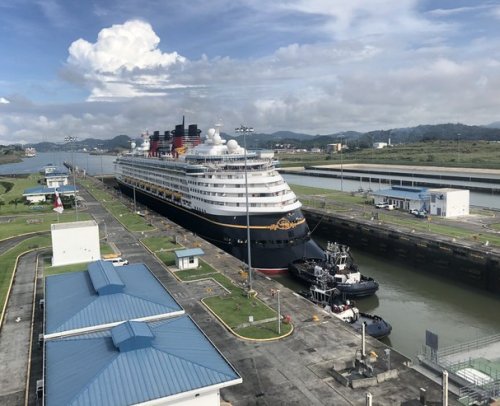
The Panama Canal, one of the most important megaprojects worldwide, is currently celebrating 108 years of service for the international trade, as well as the constant maintenance of its structures and the preservation of water resources.
Since its inauguration on August 15, 1914, The Panama Canal has been taking advantage of its geographical position and in return it has modified international trade, saving time, distances and costs for the maritime transport of finished products and raw materials between different countries.
New record
Recently, a new record was set when the container ship CMA CGM Zephyr crossed the neopanamax locks, the largest ship by cargo capacity that has crossed the route to date.
The huge container ship Zephyr, with a total capacity of 16,285 TEUs (equivalent to a 20-foot container), completed its return trip through the Neopanamax locks on July 1.
Although the neopanamax locks were initially expected to serve vessels with a maximum of 12,600 TEUs, the Panama Canal exceeded this threshold, due to the experience gained in the operation of the locks and its close collaboration with customers.
Maintenance
One of the keys to the validity of the Canal is its maintenance. The centenary locks that saw the Ancón Steamship in its inaugural transit continue to function due to a robust multi-year maintenance program in all its structures.
The most recent maintenance works took place on the east lane of the Miraflores locks in July. It was a major maintenance operation in a dry chamber for the replacement of gates 112 and 113, the change of the seals of both gates, as well as two sets of valves, among other works.
This work was possible because of the efforts of nearly 300 workers from different divisions, who worked nine continuous days, in two 12-hour shifts, with almost 200 workers per day.
Environmental commitment
The Panama Canal also fulfills an environmental responsibility with the country: to ensure the availability in volume and quality of water for its operation and for human consumption.
An example of this commitment is the creation of the Center for Innovation, Research and Hydro-environmental Technology (Citec), an initiative promoted by the Panama Canal with the support of the Technological University of Panama (UTP), as part of the efforts to increase protection of the water resource.
This is a project that involves government entities such as the National Secretariat for Science, Technology and Innovation (Senacyt), the Government Innovation Authority (AIG), and the City of Knowledge Foundation, all with the aim of participating in the efforts to do research and development on the subject.
Preserving the water resource
Additionally, and as part of the responsible management of water resources, the Panama Canal carried out annual operational tests of the 14 gates of the Gatun spillway.
The tests were carried out at the end of July, due to the abundance of rains in the Canal basin due to the influence of the La Niña phenomenon this year.
At the time of the opening of the gates, the level of Gatun Lake was 87.55 feet, that is, 1.45 feet from the maximum operating level of 89 feet, and which is generally recorded between the months of November or December.
The waterway ensures that the 14 gates of the Gatun spillway are available for flood control when the reservoir reaches its critical levels in the last quarter of the year.
Leave a Reply